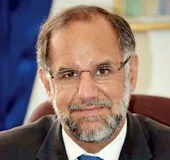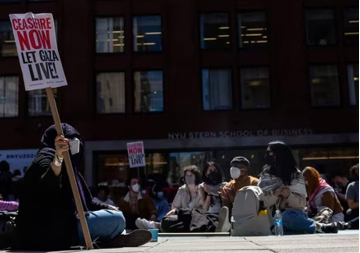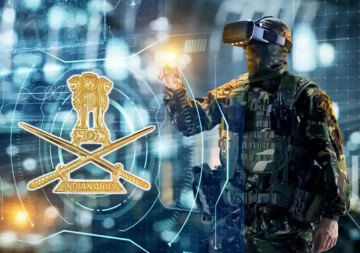When the National Security Advisers (NSAs) of India, the US, Saudi Arabia and the United Arab Emirates (UAE) met in Riyadh on May 8 and agreed, among other things, to “advance their shared vision of a more secure and prosperous Middle East region interconnected with India and the world,” it moved the spotlight to the inclusion of geoeconomics in the nebulous but expansive domain of security. The very fact that four of the most powerful officials from these countries were meeting on a Sunday morning was a remarkable manifestation of the tectonic geopolitical shifts taking place in West Asia. And even without being a fly on the wall, it would be fair to assume that railways were not the only topic of conversation.
But the railway connectivity is important and the topic has come up in meetings of the India-UAE High-Level Task Force on Investment; senior representatives from Etihad Rail, Indian Railways, IRCON and RITES have participated in these deliberations. India has offered its expertise in building the expanding rail networks of the Gulf and also held out the possibility of providing high-speed, heavy-capacity freight locomotives like the GE diesel locos or the electric WAG-12 locos being manufactured by the Alstom-Indian Railways joint venture at a greenfield manufacturing facility in Madhepura, Bihar.
Jake Sullivan, the US NSA, implicitly drew attention to the emerging possibilities in a speech on May 4 when he told his audience, “If you remember nothing else from my speech, remember I2U2, because you will be hearing more about it as we go forward. This is a partnership with India, Israel, the United States, and the UAE, and the fundamental notion is to connect South Asia to the Middle East to the US in ways that advance our economic technology and diplomacy. And we've already got a number of projects underway and some new exciting steps that we're looking forward to undertaking in the months ahead.”
That notion of connectivity also attempts to address, at least in part, concerns expressed by the Emiratis and others in the Gulf about Washington’s oft-cited pivot to Asia. As Ebtesam al Kitbi of the Emirates Policy Centre wrote for Observer Research Foundation, “The UAE sees Asia and the Middle East in a strategic continuum and therefore struggles to understand the logic of an American pivot to Asia from the Middle East… In that sense, it is in the Emirati interest to see a change in the mental map of American strategists who fail to connect the Middle East to Asia. This is where India comes in, with the concept of ‘West Asia’ bringing India and the Middle East together.”
At a purely conceptual level, the connectivity project seems quite attractive. A study by Prof Michael Tanchum suggests that a multimodal India-ArabMed freight corridor linking Mumbai with the Piraeus trans-shipment port in Greece via Haifa in Israel that uses mostly existing and some new railway lines is very much feasible. It could cut the transit time from Mumbai to Piraeus to 10 days from 17 days via the Suez route and would also create an alternative to the Suez Canal. As indicated by this author, much of the infrastructure starting from the Jebel Ali port in Dubai to Al Ghuwaifat on the Saudi border and on to Al Haditha on the Saudi-Jordan border is in place or is at an advanced stage of construction. A 300-km rail link is needed from Al Haditha to Beit Shean on the Jordan-Israel border and a rail link onwards to Haifa is already in place. The fact that the Adani group has acquired a 70 per cent stake in a terminal at Haifa advances another important piece on this diplomatic chessboard.
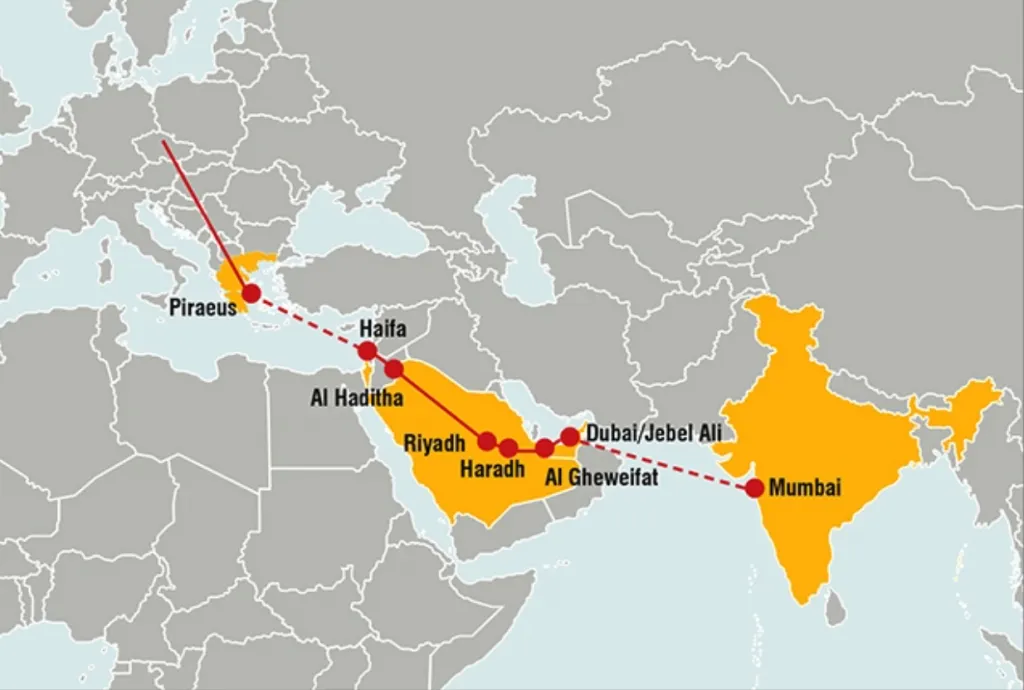
However, translating a conceptually possible project into an economically viable one will require a high order of political will and diligent execution. Unlike ships that sail across the waters, railway lines have different standards that must be harmonised, efficient transit through multiple borders needs efficient and trustworthy customs processes and economic viability needs steady and continuous volumes of freight traffic. It also needs Saudi Arabia's active consent for a very overt trade link with Israel. Riyadh has been moving steadily in that direction but the blatantly hardline complexion of Israel’s current government and the violence being directed not just against the Palestinians under occupation but also against the holy Islamic sites in Jerusalem by government ministers isn’t helping matters.
Israel, though, has been one of the earliest advocates of the connectivity project and Foreign Minister Eli Cohen reiterated this at a CII gathering during his truncated visit to Delhi on May 9 with his comment, “Our vision is that Israel, the Gulf Arab countries and India is the gate from the east to the west. The trade that will come from India will go to some Arab port and from there by train till Haifa port in Israel and from there to the markets in Europe.”
Over the past decade, India has invested considerable energy in its relations with UAE, Saudi Arabia and Israel through separate strategic partnership agreements and is now in a good position to participate in the geoeconomics opportunities being created by the shifting geopolitics in the region. The visit of NSA Ajit Doval to Riyadh and the steady progress being made by the I2U2 demonstrate a nimble, pragmatic and business-like foreign policy that will yield positive outcomes. The addition of Saudi Arabia to the mix and the presence of Sheikh Tahnoun bin Zayed, UAE’s influential NSA in Riyadh, are vital developments for the connectivity project because of concerns in the UAE about trade restrictions being imposed by the Saudis on goods coming from the emirates.
The connectivity project would be a positive development on its own steam. It doesn’t have to be packaged as a counter to China’s Belt and Road Initiative as suggested by an Axios report even though it might suit the optics in Washington DC. Riyadh and Abu Dhabi have steadily deepened their relationship with Beijing and until recently, Israel, too, was heavily invested in it. Nor should it be seen as an attempt to undermine the Chabahar or Bandar Abbas connectivity projects via Iran. Each one of these has its own place in the geoeconomics of the region and each can stand on its own if it delivers on its promise.
This commentary originally appeared in The Tribune.
The views expressed above belong to the author(s). ORF research and analyses now available on Telegram! Click here to access our curated content — blogs, longforms and interviews.



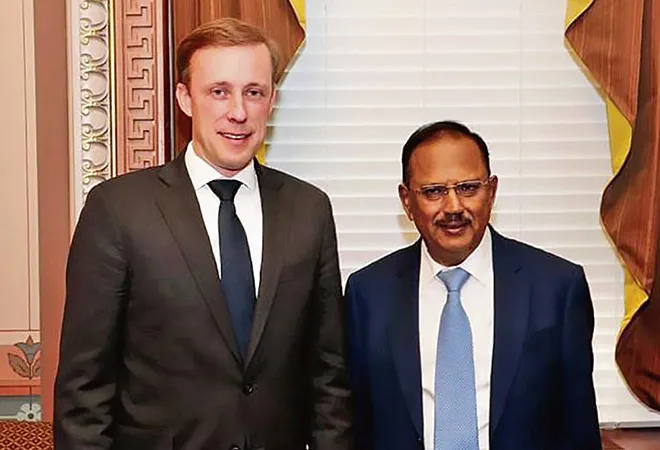

 PREV
PREV
